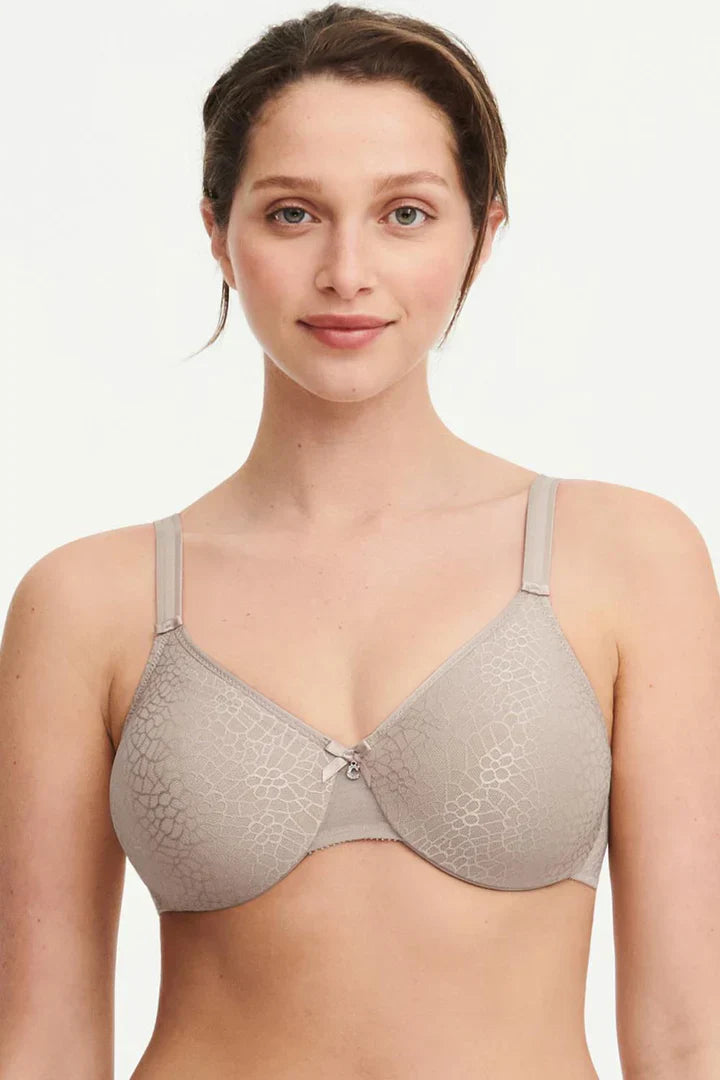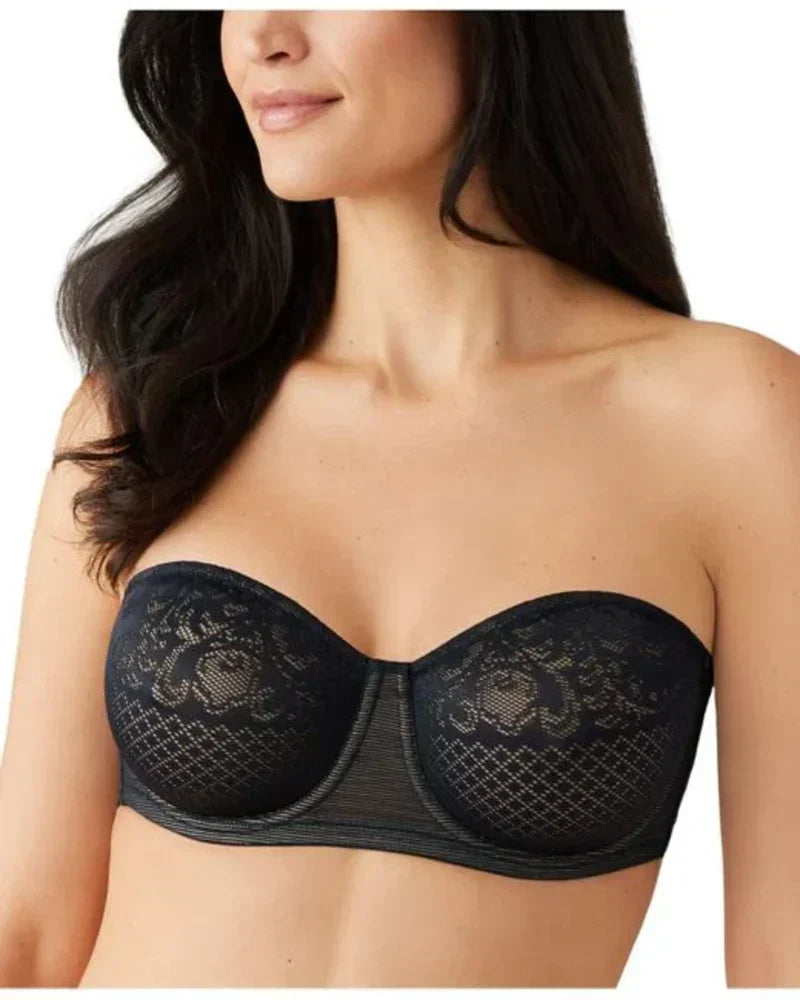Bra Failure Guide

Bra Failure: Causes, Prevention, and When to Replace Your Bras
A well constructed bra is designed to provide lift, shape, and support, but like any garment, it has a lifespan. Bra failure occurs when a bra can no longer perform its intended function due to loss of elasticity, structural damage, or fabric breakdown. Understanding the causes and signs of bra failure not only helps you extend the life of your lingerie but also ensures that you maintain the support and comfort your body needs.
A bad bra that fails to provide proper fit and support can lead to negative consequences for your health and comfort. Most women experience bra fit issues at some point, making this a widespread problem. One of the most common results of bra failure is pain, including back, shoulder, or chest pain. Wearing an ill-fitting bra also increases the risk of health and comfort problems, such as poor posture and potential long-term issues.
What Is Bra Failure?
In lingerie terms, bra failure refers to the point at which a bra’s materials or structure have degraded to the extent that the garment no longer offers proper fit or support. This can happen gradually through normal wear and washing, or suddenly due to a manufacturing defect or improper use. Common symptoms include sagging bra cups, where a poorly fitting bra cup can lead to overflow or gaps; cup gaping, which appears as excess space at the top of the cup; stretched-out bands; broken underwires; fraying straps; distorted cup shapes; and straps or bands that slip off the shoulders or out of place.
Many women may feel the urge to pull off their bra as soon as they get home due to the discomfort caused by bra failure. Pulling at straps or bands is also a common reaction to discomfort or poor fit.
Bra Components
A well-fitting bra is more than just a piece of clothing, it’s a carefully engineered garment made up of several essential components, each playing a unique role in support, comfort, and style. Understanding these parts can make bra shopping and bra fitting much easier, helping you avoid the pitfalls of a wrong size bra or uncomfortable wear.
Bra Cups- The bra cups are designed to hold and shape your breasts, providing coverage and support. The right cup size is crucial; if the cups are too small, you may experience spilling or discomfort, while cups that are too large can lead to gaping cups and a lack of support. Different cup styles, like molded, seamless, or lace, cater to various breast shapes and preferences, so choosing the right style can enhance both comfort and appearance. Ensuring the cups fully enclose your breast tissue without gaps or bulges is a key sign of a proper fit. For those looking to protect their hairstyle during showers, consider the Satin Lined Flexi Shower Cap - Terracotta Checker, which provides a waterproof shell and extra coverage.
Bra Band-The bra band wraps around your ribcage and is responsible for most of the bra’s support. A snug band should feel secure but not too tight—if it leaves red marks or feels uncomfortable, you may need a different band size. On the other hand, a loose band can cause slipping straps and reduce overall support. When bra shopping, always check that the band sits level around your body and doesn’t ride up, as this is a common sign of an ill fitting bra.
Bra Straps- Bra straps help keep the cups in place and add extra support, but they shouldn’t bear the majority of the weight. Wider straps can offer a more comfortable fit, especially for women with larger cup sizes or heavier breasts, while narrow straps may be better for certain styles or outfits. If you find your straps slipping off your shoulders, it could be a sign of a wrong bra size or that the straps need to be adjusted. Adjustable straps are a must for achieving the right tension and support for your body.
Underwire- The underwire is a thin, curved piece of metal or plastic sewn into the base of the bra cups. Its job is to lift and shape the breasts, providing extra support—especially in larger cup sizes. However, if the underwire digs into your skin or feels uncomfortable, it may be a sign of a wrong size bra or an unsuitable style for your breast shape. Choosing bras made with breathable, moisture-wicking fabrics such as modal can enhance comfort throughout the day; learn more about whether modal is moisture wicking and its fabric benefits. A properly fitting underwire should sit flat against your ribcage and fully encase your breast tissue without poking or pinching.
By understanding how each component works and interacts, you can make more informed choices when it comes to bra fitting and bra shopping. Whether you’re looking for a more comfortable fit, better support, or a style that suits your body and outfit, paying attention to the details of bra cups, bra band, bra straps, and underwire will help you find bras that feel comfortable and look great all day long.
Common Causes of Bra Failure: The Impact of an Ill Fitting Bra
-
Loss of Elasticity- The band is the primary source of support in a bra. Over time, the elastic fibers weaken from tension and washing, causing the band to ride up or feel loose. Proper sizing and regular measure can help prevent this issue.
-
Underwire Breakage- Underwires can snap, poke through the fabric, or warp, often due to improper laundering or excessive strain from a poor fit.
-
Strap Fatigue- Straps stretch permanently when over-adjusted to compensate for a loose band, leading to heavy lifting by the straps and increased discomfort.
-
Cup Collapse- Foam or fabric cups can lose shape through repeated compression, heat damage, or heavy wear. If you experience spilling out or gaping, consider trying a bigger cup size or a half size for a better fit.
-
Fabric Wear- Friction, perspiration, and detergent residue can cause pilling, tearing, or discoloration. Additionally, rough or poorly finished seams can contribute to discomfort and bra failure.
Accurate measurements are essential for finding the right bra. Use a measuring tape to measure your bust and ribcage, and consult a reliable size chart to determine your correct size. Regularly checking your measurements and sizing can help you select bras that fit well and prevent premature bra failure.
How to Prevent Bra Failure
When women wear bras, it's important to focus on proper care and fit to ensure comfort, support, and longevity for all women.
-
In the world of intimate apparel – including bras and underwear – it's important to care for your garments to make them last longer.
-
Rotate your bras- Avoid wearing the same bra two days in a row to allow the elastic to recover.
-
Wash with care- Hand washing is best; if machine washing, use a lingerie bag and cold, gentle cycle.
-
Air dry only- Heat from dryers breaks down elastic and weakens fabrics.
-
Ensure proper fit- Wearing the correct size prevents overstretching bands and straps. Regularly adjust the straps and band to maintain optimal support and comfort.
-
Store properly- Stack molded cups and avoid folding them inside out to preserve shape.
These prevention tips have covered the most common causes of bra failure.
Signs It's Time to Replace Your Bra
-
The band rides up even on the tightest hook.
-
Cups wrinkle, gape, or collapse despite being the right size. If you notice gaping or collapsing cups, trying a push-up bra can help push the breasts upward and improve the fit.
-
Straps no longer stay adjusted.
-
Underwires poke out or shift.
-
The bra feels uncomfortable or unsupportive, even after adjustment.
-
You experience shoulder pain from worn-out or poorly fitting straps.
If you notice multiple signs at once, your bra has likely reached the end of its lifespan. Don’t wait for things to get worse, replacing your bra promptly can help you avoid discomfort and other frustrating issues.
Average Lifespan of a Bra
With regular wear and proper care, most bras last 6–12 months before noticeable support loss occurs. A well-maintained bra helps your clothes fit and look better by providing the right support and shape. Proper bra support also enhances the appearance of your boobs under clothes, giving a more flattering silhouette. Specialty bras (sports bras, strapless bras) may have shorter lifespans due to higher stress on the materials.
Key Takeaway
Bra failure is inevitable, but understanding its causes can help you extend the life of your lingerie and maintain optimal fit. Always measure your bust with the tape measure held parallel to the ground to ensure accurate sizing and extend your bra's life. By rotating your bras, caring for them properly, and replacing them when necessary, you can avoid the discomfort and poor posture that result from wearing a worn out bra.


